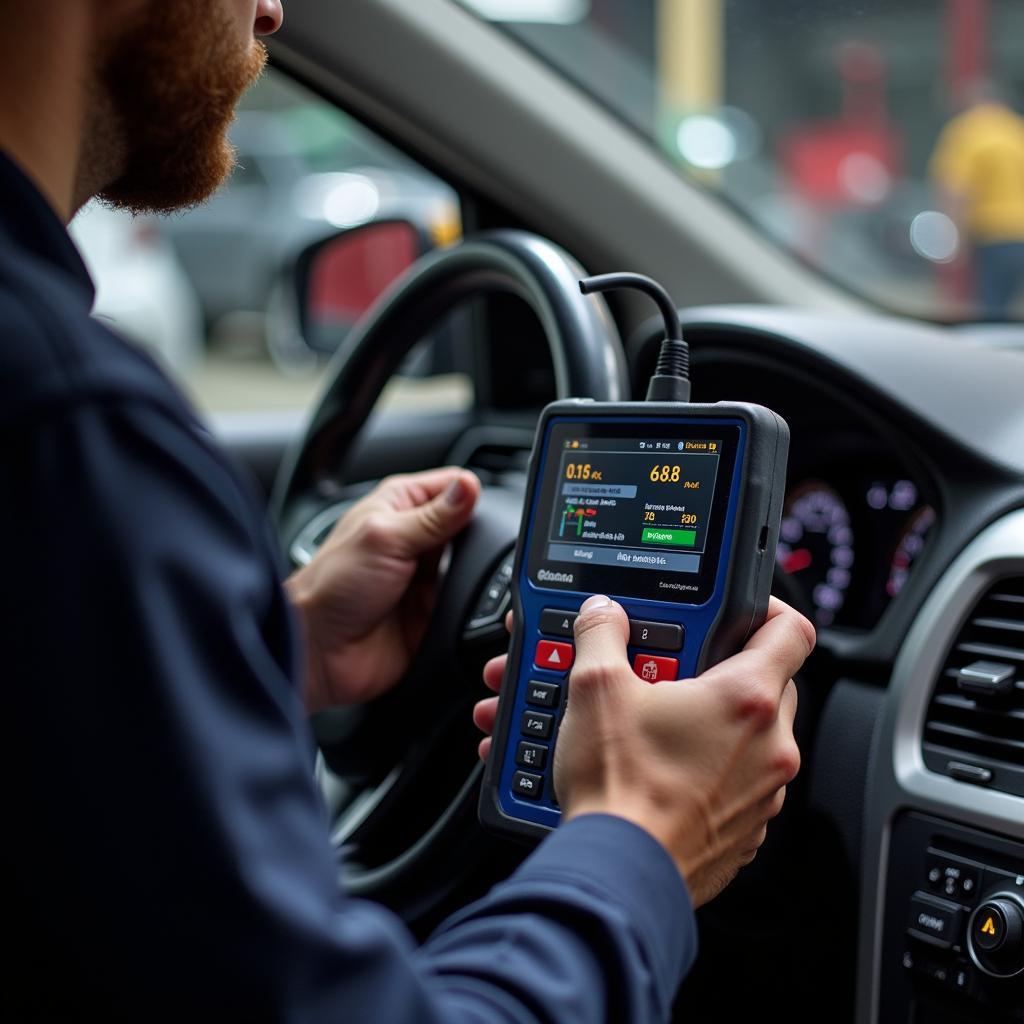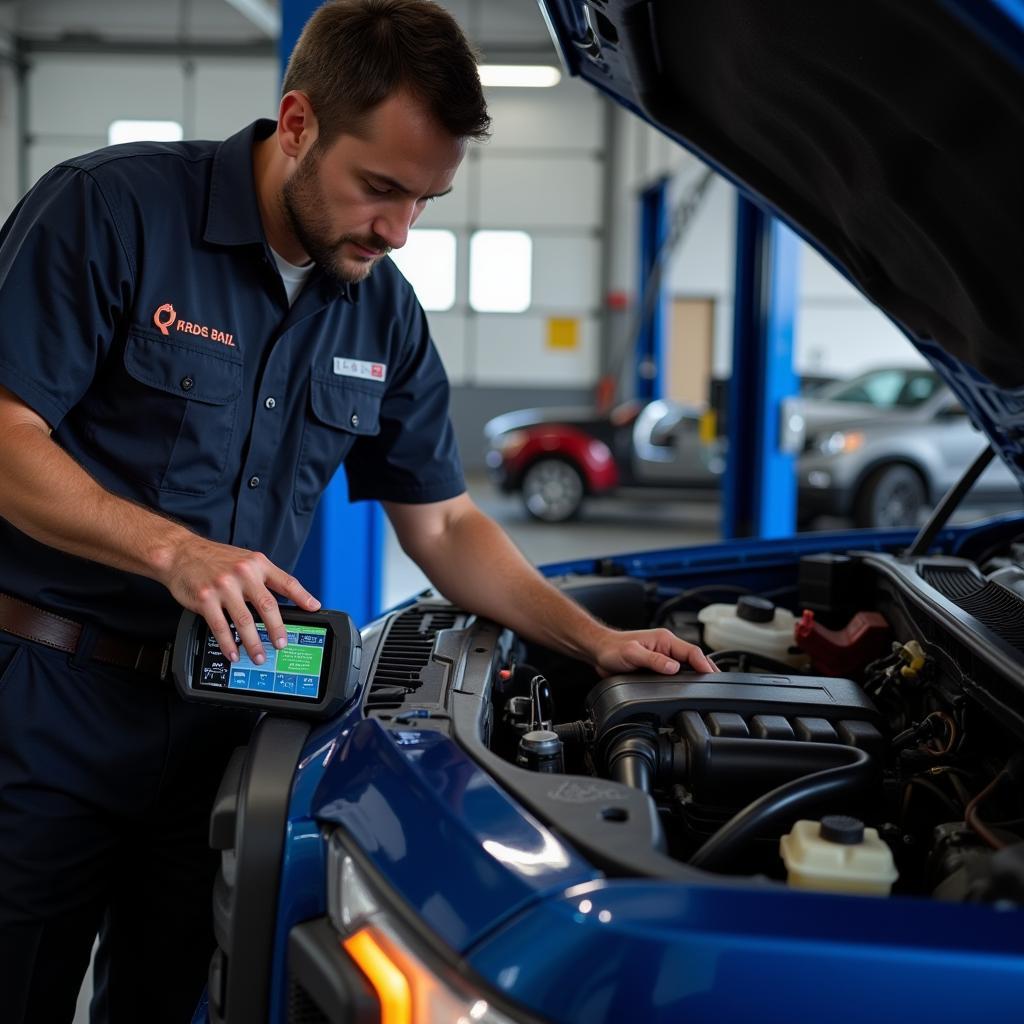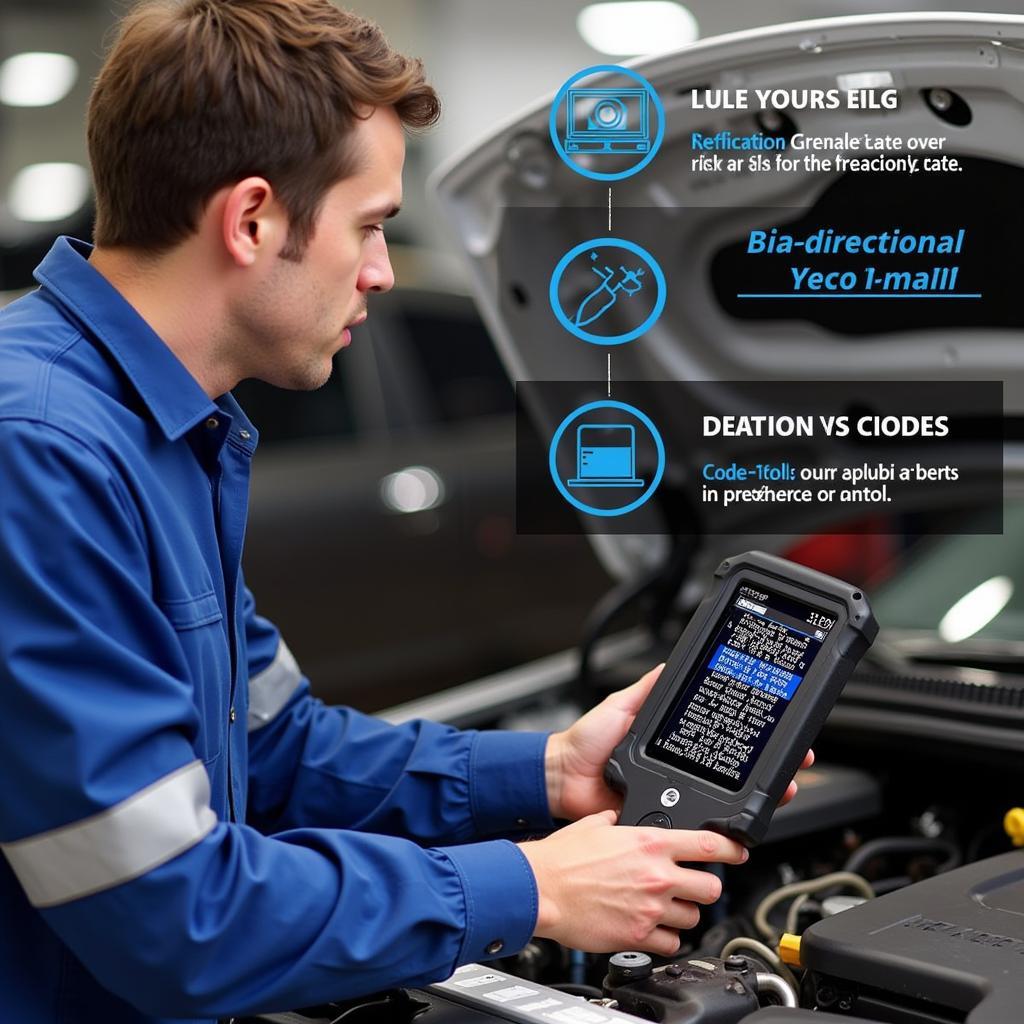In today’s automotive landscape, vehicles are becoming increasingly sophisticated, relying heavily on intricate electronics and software systems. While this technological advancement brings numerous benefits, it also presents new challenges when it comes to diagnosing and repairing automotive issues. This is where Hardware And Software Diagnostic Tools come into play, revolutionizing the way mechanics and car owners approach vehicle troubleshooting.
 Modern Car Diagnostics
Modern Car Diagnostics
Understanding the Importance of Diagnostic Tools
Gone are the days of relying solely on mechanical expertise and intuition to identify car problems. Hardware and software diagnostic tools provide a window into the complex inner workings of modern vehicles, enabling technicians and car enthusiasts to:
- Retrieve Diagnostic Trouble Codes (DTCs): These codes, generated by the vehicle’s onboard computer, act as breadcrumbs, pointing towards potential issues within various systems.
- Access Live Data Streams: These tools allow users to monitor real-time sensor readings, such as engine RPM, coolant temperature, and oxygen sensor voltage, providing valuable insights into the vehicle’s current operating status.
- Perform Actuator Tests: With the ability to command various vehicle components, like solenoids, actuators, and relays, these tools help pinpoint faulty components.
- Program and Configure Modules: For tasks like replacing a faulty ECU or updating software, specific diagnostic tools allow for module programming and configuration.
Types of Diagnostic Tools: Software and hardware diagnostic tools Explained
Navigating the world of automotive diagnostic tools can feel overwhelming, especially with the wide array of options available. Let’s break down the two main categories:
1. Hardware Diagnostic Tools: The Workhorses
These are the physical devices that connect to your vehicle’s OBD-II port, serving as the interface between the vehicle’s computer and the user.
- Basic Code Readers: Affordable and user-friendly, these entry-level tools are perfect for reading and clearing DTCs.
- OBD-II Scanners: Offering more advanced features than basic code readers, these tools provide access to live data streams and some bi-directional control capabilities.
- Professional-Grade Scan Tools: Used by experienced technicians and workshops, these comprehensive tools offer extensive diagnostic functionalities, including module programming and advanced coding.
2. Software Diagnostic Tools: The Brains Behind the Operation
Often working in tandem with hardware tools, software diagnostic tools provide the user interface and interpret the data received from the vehicle.
- OEM (Original Equipment Manufacturer) Software: Developed by the vehicle manufacturers themselves, these tools offer the most comprehensive diagnostic capabilities for a specific car brand.
- Third-Party Software: More affordable and often compatible with various vehicle makes, these options provide a good balance between functionality and cost.
Choosing the Right Diagnostic Tool: Factors to Consider
Selecting the appropriate diagnostic tool hinges on your specific needs and expertise. Here’s a quick guide:
- Frequency of Use: For occasional DIY repairs, a basic code reader or an OBD-II scanner might suffice. However, professional mechanics or frequent DIYers benefit from investing in more advanced tools.
- Vehicle Make and Model: Certain tools are designed for specific car brands or models. Ensure compatibility before purchasing.
- Budget: Prices can range significantly, so determine your budget and prioritize features accordingly.
- User Experience: Opt for tools with intuitive interfaces and clear documentation.
Expert Insight:
“Investing in a quality diagnostic tool is essential for any serious car enthusiast or workshop,” says John Miller, a seasoned automotive engineer with over 20 years of experience. “These tools pay for themselves in the long run by enabling faster, more accurate diagnoses, saving you time and money on unnecessary repairs.”
Beyond Diagnostics: The Future of Car Repair
As vehicle technology continues to evolve at a rapid pace, so too will the capabilities of diagnostic tools. We can expect to see:
- Increased Use of Artificial Intelligence: AI-powered diagnostics will enable even more accurate diagnoses and predictive maintenance capabilities.
- Cloud-Based Solutions: Cloud connectivity will allow for remote diagnostics and over-the-air software updates.
- Augmented Reality Integration: AR technology will assist technicians in visualizing complex repairs and accessing information hands-free.
Conclusion: Empowering Car Owners and Mechanics
Hardware and software diagnostic tools are no longer optional extras; they are indispensable assets in the realm of modern automotive repair. By understanding the different types of tools available and their respective functionalities, car owners and technicians can embrace these powerful tools to diagnose problems accurately, streamline repairs, and ultimately, take control of their automotive destinies.
For expert advice on selecting the right diagnostic tool for your needs, feel free to contact the team at ScanToolUS at +1 (641) 206-8880 or visit our office at 1615 S Laramie Ave, Cicero, IL 60804, USA. We’re here to help you navigate the world of automotive technology!


